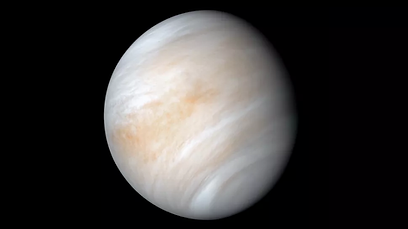Venus -
"The Goddess of Love and Beauty" (Aphrodite)
In Astrology, she's similar to the mythology, all about beauty, art and the heart.
She's about our value system - which makes her energies "essential" not only on the physical plane.
What is important to us, how do we define what is beautiful - desires can grow out of this...
Love - when "unconditional" (or at least not "too conditional") is what brings us the most fulfilling experiences.
These are not decisions we make from our logic mind but from our heart-mind. As she's also about desire, it can bring her themes into imbalance and bring forth jealousy, greed and competition thinking...
Because she's the value system, she also governs money and financial affairs as well as all kind of property.
She is "attracting, magnetic" in energy and is about our vascular system and the heart chakra.
Did you know? A Scientist with name J. A. Armour did find out, that the Human heart contains neurons - so, there is a "brain" in the heart - wonderful also this is now an old knowing that is scientifically proven....
As we're having this "heart-brain" and it's in direct connection to the "gut" as well as the brain/mind, we can understand that Venus' theme goes much deeper than the physical world - self value, self love and how we define ourselves in this perspective ....
As the heart-intelligence does hold all experiences, past and future, we can retrieve it all anytime, and gain access to the riches we truly possess.
Greek Mythology:
Aphrodite was born from the sea and titled the Goddess of Love. She seeded passion and desire into the hearts and was also about marriage and adultery. She was a jealous type at times...
Some Astronomy:
Venus lies within Earth's orbit, and so never appears to venture far from the Sun, either setting in the west just after dusk or rising in the east a bit before dawn.
Venus orbits the Sun every 224.7 Earth days.
Venus spins around her own axis very slowly and as Uranus from east to west (clockwise), and takes her 243 Earth days to rotate once around her axis - this means, that one Venusian year is slightly shorter than one Venusian day... sounds odd, I know....
Her orbit is very round - the most circular (difference only 0.006) of all bodies we know so far in the solar system.
Venus is a terrestrial planet and is sometimes called Earth's "sister planet" because of their similar size, mass, proximity to the Sun, and bulk composition. It is radically different from Earth in other respects. It has the densest atmosphere of the four terrestrial planets, consisting of more than 96% carbon dioxide. (Ref. Wikipedia/ Nasa)
Venus - Earth orbital relationship - heliocentric sidereal
Every almost 8 years, Venus completes a synodic cycle with Earth - every 584 days (ca 1,6 years) they form a conjunction, each time about 7 signs apart, therefore it takes 5 cycles for the synod to be "back" / completing a 7,97 years cycle.
A next Pentagram will be formed about 2 degrees away from the previous one... to be completed, it takes 243 years from Southnode to Southnode. In between - though every 121.5 years, it's a cycle of the Northnode.... even this 243 years cycle isn't the only one as it's starting with 2 Venus transits 8 years apart.
Sometimes, when Venus is exactly on the Southnode a single transit is formed and from such "single exact" alignment to the next it's about 10'708 years. We're about halfway through that bigger cycle and started the last 243 years cycle with the 2 transits of 2004 and 2012.
Each of the smaller cycle is embedded in it's larger cycle and all of them are defined by the zodiacal position and star alignments....
When these exact alignments happen, the dates and times are the same for heliocentric as for geocentric times - Venus transits are an observable event. You can read more about these on Nasa sites, Wikipedia and so on.
Beside a video-link below about the transit cycles, you'll also see a diagram I made about the Venus-Earth Pentagram.

For more details, and explanation - I created a course...
An introduction video and further link you can find on my
Event-page.... "lifetime" access for ca. $22
some "mechanics" of the Venus orbital cycles and retrogrades (geocentric)
Mercury and Venus are orbiting "between" the Sun and Earth and as viewed from Earth we can only see them in a "close" angle to the Sun.
And we see their opposition like a conjunction and because of that there are other terms used to "distinguish" the two events.
When Mercury or Venus are on the other side of the Sun (opposition from Earth) it's called a superior conjunction and when they are in conjunction with Earth it's called an inferior conjunction.
The alignment of the superior conjunction: Venus - Sun - Earth
The alignment of the inferior conjunction: Sun - Venus - Earth
When Mercury or Venus are at inferior conjunction they will station and then go "retrograde", station again and then in direct motion go over the same longitudes again.
Within the path from inferior to superior conjunction Venus will appear as the Morning star (rising before the Sun) for some time and from superior to inferior conjunction will set after the Sun as the Evening star for some time - same "mechanics" for Mercury.
Venus is one of the very "personal" planets through her placement close to the Sun. The inferior conjunction and therefore "new cycle" with Earth is significant and "feelable". The retrograde time does give us the "time-space" to really incorporate all that we experienced in the old cycle - to reflect and discern what is worth to take with us into the new cycle and what is kind of "outdated" and can be dismissed...
The Phases of Venus as seen from Earth

